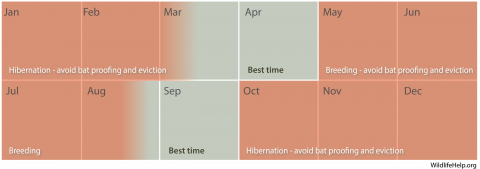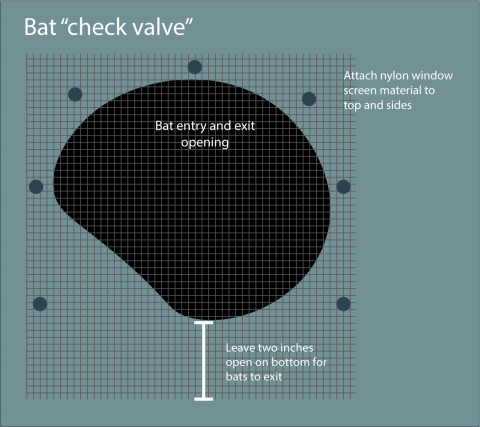Evict, exclude
Install bat "check valves," bat cones, or other one-way door excluders over active openings that allow bats to exit but prevents their re-entry. Check valves and cones should effectively evict all resident bats in a few days, after which you can remove valves and seal openings.
Bat check valves can be made with nylon window screen material attached above, on the sides and allowed to hang over an opening. Extend the screen material two inches below the opening, leaving the bottom loose enough for bats to exit underneath.
Another simple one-way excluder can be made from plastic strips. In a section of flexible plastic, cut small strips (about 1-inch wide) that will serve as tiny door flaps. Bats can push past them to exit, but the strips will not flex inward to allow re-entry. This excluder should be installed in the same manner as the screening or netting.
Exclusion of bats from Spanish or concrete tile roofs is often as simple as installing a rain gutter. The gutters should be installed flush against the attachment surface. The upper edge of the gutter should be even with the lower edge of the tile, extending outward about eight inches. This exclusion can be done any time because bats are still able to leave. Bats dislike climbing over a slippery metal gutter and usually will not return. Evicted bats may try to re-enter the building looking for alternative openings.






